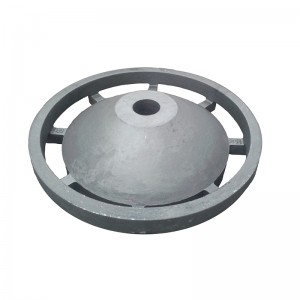Dic . 12, 2024 09:53 Back to list
castings parts
The Essence of Castings in Manufacturing
In the world of manufacturing, the term castings refers to the process of shaping liquid metal into desired forms through a mold. This age-old technique has evolved significantly over the centuries, embracing technological advancements while remaining a cornerstone of various industries, from automotive to aerospace and beyond. Understanding the intricacies of castings and their parts not only illuminates the manufacturing process but also highlights the critical role they play in the creation of complex components.
Casting is a versatile manufacturing process that involves pouring molten metal into a mold, where it solidifies into a specific shape. The diversity of castable materials, including iron, aluminum, steel, and bronze, allows for a wide range of applications. Each material possesses unique properties, making certain metals preferable for specific cast components. For example, aluminum castings are renowned for their lightweight and corrosion-resistant qualities, ideal for automotive and aerospace applications when mobility and durability are paramount.
The Essence of Castings in Manufacturing
The creation of the molds is critical. There are various types of molding processes, including sand casting, investment casting, and die casting, each suited for particular applications and material types. Sand casting, for instance, is one of the most widely used methods due to its simplicity and cost-effectiveness, where sand is used to create molds that can easily replicate intricate designs. Conversely, investment casting is ideal for producing high-precision parts with excellent surface finishes, commonly used in industries where precision is critical.
castings parts

Once the mold is prepared, the next step is pouring the molten metal. This stage requires careful control of temperature and timing, as the characteristics of the cast part depend significantly on the metal's behavior during solidification. The cooling process is equally important, as it affects the material properties of the final casting. Improper cooling can lead to defects such as shrinkage or porosity, compromising the integrity of the part.
After the cooling phase, the cast part typically requires finishing and machining. This may include processes such as grinding, sanding, or polishing to achieve the desired surface quality. Finishing operations not only enhance the aesthetic appeal but also ensure the part meets the stringent specifications set forth for its intended use.
The benefits of using castings in manufacturing are multifaceted. Firstly, the casting process allows for the creation of complex geometries that are often impossible to achieve with other manufacturing methods. This capability is particularly beneficial in sectors that require intricate designs, like aerospace components, where precision can significantly impact performance and safety.
Moreover, cast parts can often be produced in larger quantities with less material waste compared to traditional machining methods. This efficiency leads to cost savings for manufacturers, making castings a highly economical choice for mass production. Additionally, the ability to use a variety of materials enables manufacturers to tailor components to meet specific performance criteria, enhancing overall product functionality.
In conclusion, castings and their parts are fundamental elements in the landscape of modern manufacturing. From their ability to create complex shapes and reduce waste to their application across diverse industries, castings represent a blend of tradition and innovation. As manufacturing technology continues to evolve, the significance of castings remains unwavering, demonstrating their crucial role in shaping the future of production and design. Understanding the process and its myriad applications not only equips manufacturers with essential knowledge but also empowers them to push the boundaries of what is possible in engineering and fabrication.
-
Centrifugally Cast Iron Water Main Pipe | Ductile Iron Solutions
NewsAug.24,2025
-
Durable Cast Steel Concrete Pipe Mold Bottom Rings & Base Trays
NewsAug.23,2025
-
Centrifugally Cast Iron Water Main Pipe for Reliable Mains
NewsAug.22,2025
-
Durable Centrifugally Cast Iron Water Main Pipe
NewsAug.11,2025
-
Centrifugally Cast Iron Water Main Pipes for Reliability
NewsAug.10,2025
-
High-Quality Centrifugally Cast Iron Water Main Pipes
NewsAug.09,2025


